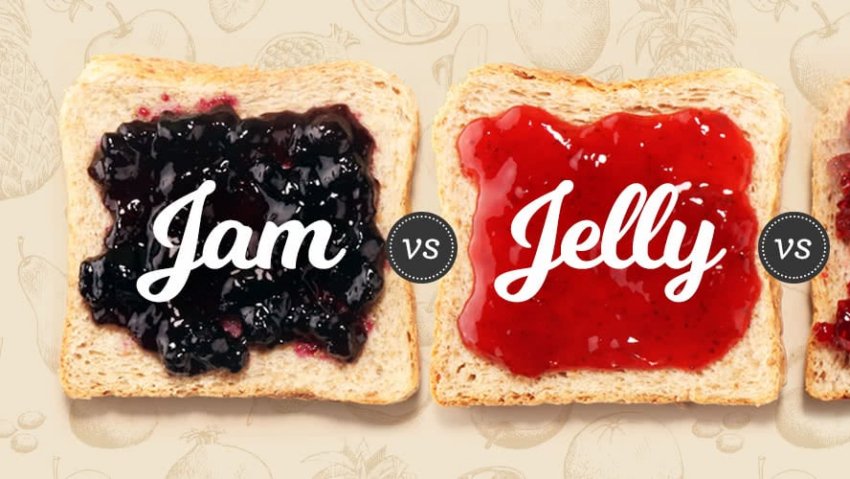
Jam and Jelly: The Difference Between Jam and Jelly
Is there a distinction between jam and jelly? Is there truly a difference between a biscuit or scone covered with strawberry jelly and one smeared with strawberry jam? What about those other spreads, such as fruit butter, preserves, and marmalade? Are those distinctive as well?
Two common fruit spreads that can be found in homes all around the world are jam and jelly.
Even though they are interchangeable in many recipes, you might be curious as to what makes them different.
There is a significant difference, believe it or not! The key distinctions between jelly, jam, and other common fruity condiments are outlined below. Let’s start now!
The similarities and differences between jam and jelly are discussed in this article.
Most important differences
Jams and jellies are both sweet and gooey fruit spreads, yet they differ fundamentally in certain ways.
They both have the same components: fruit, sugar, water, pectin, and acid, which is typically lemon juice.
A type of fiber called pectin is present in the cell walls of plants and fruits. It is frequently used in the food industry to give texture to items made from fruits and vegetables because it gels when combined with aan cid. (1)
Sugar is naturally present in fruits and their juices, but adding extra encourages the gelling process. Additionally, sugar serves as a preservative by inhibiting the development of dangerous germs. (2)
Jellies and jams have similar components, but they differ in texture, appearance, and how they use or incorporate fruit.
Jelly
Fruit or vegetable juice is used to make jelly. They stand out for their crisp appearance and sturdy feel that keeps them in place (3).
The peels and pulp are removed from the juice by straining them through a strainer using cheesecloth or a jelly bag after the juice has been collected by boiling crushed fruit or fruit pieces in water until soft. It also guarantees a clean appearance (4).
Jellies can be made with or without pectin, although most recipes call for it since a good jelly needs enough gel strength to hold its shape.
Apples and citrus fruits are typically used to make commercial pectin, which is available in both powdered and liquid forms (5).
Jams
Jams are thicker spreads that maintain their shape but are less hard than jellies since they are created from crushed or mashed fruit.
Jam is not transparent like jelly, and it could contain pieces of fruit or other debris. However, fruit stems and pits must be eliminated (7).
Fruits naturally contain pectin, thus jams can be made both with and without it. If pectin isn’t used, you should still add some underripe fruits because they have more pectin than ripe ones
Several Similarities between Jam and Jelly
Jams and jellies share comparable nutritional profiles and potential health advantages in addition to their sweet flavors and ingredient lists.
Similar Dietary Patterns
It’s not surprising that jams and jellies have similar nutritious compositions given that they share similar ingredients.
The nutritional information for one tablespoon (20 grams) of each of these two fruit spreads is provided below:

Both spreads include between 48 and 54 percent sugar and approximately the same amounts of macronutrients.
The amount of vitamins and minerals in fruits varies depending on the type of fruit used and if pectin was added.
For instance, the longer cooking time required to produce spreads without pectin may result in a decrease in the number of nutrients like vitamin C that are heat-sensitive. (8)
Which is healthier? Jam or Jelly?
The nutritional value, fruity flavor, and spreadability of jam and jelly are almost identical. As a result, they are interchangeable.
The nutritional profile of jams was examined in certain research after 9 months of preservation, and no appreciable changes in the number of antioxidants were found.
So, in the absence of fresh fruit, jams could serve as a source of antioxidants (9) (10)
You can easily find and buy our Jams here
